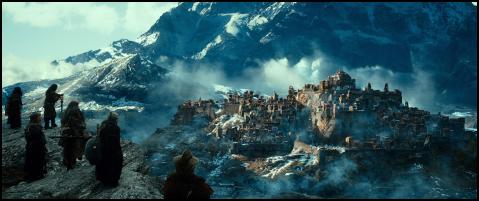VFX Workers Fight Back With Ramifications for New Zealand
VFX Workers Fight Back With Ramifications for New Zealand

By Jamie Neikrie
Despite record hauls for summer blockbuster movies, companies that produce the ground-breaking visual effects (VFX) for the U.S movie industry have suffered in the States.
As countries like Canada, the U.K, and New Zealand continue to provide budget breaks to big-budget films, U.S movie studios have increasingly shifted their business overseas. Just a couple months ago, the New Zealand government announced that it would raise subsidies for film productions from 15-20 per cent, with an additional five per cent reduction for movies that will provide an economic benefit to the country. This announcement came just before it was revealed that James Cameron would receive a 25% tax rebate to film three Avatar sequels here and The Hobbit films enjoyed $67.1 million in rebates in their second year of production.
Much of physical shooting remains tethered to Los Angeles and New York. Production costs to ship movies overseas would simply be too much. But visual effects can easily be sent overseas, where movie companies can benefit from favourable tax structures. It is this business that has boosted Wellington’s movie industry. In last year alone, “Wellywood’s” Weta Digital provided effects work on blockbusters like The Hobbit, Iron Man 3, and The Wolverine.
Visual effects workers in the United States have long been calling for Congress to intervene on their behalf. But they have had to fight the powerful Motion Picture Association of America’s annual lobbying budget of $4.7 million.
As the Hollywood Reporter cited, the six major U.S studios represented by the MPAA “generated more than $4.3 billion in operating profit in 2013, up 23 per cent from $3.5 billion in 2012.” Profits are skyrocketing for U.S movie companies–in part because of cheap, foreign labour–and the MPAA doesn’t want Washington to change that.
It is no wonder then, haemorrhaging jobs to overseas studios, that U.S VFX studios have continued to close. As The Verge reported, Rhythm & Hues filed for bankruptcy in the same year it won an Oscar for its visual effects work on Life of Pi. Digital Domain, which provided VFX for Titanic, was declared bankrupt in 2012. “Even Dreamworks (was) forced to lay off 350 employees.”
However, thanks to strange turn of events, the U.S VFX industry may finally have some firepower to fight back. Their source; the MPAA’s own words.
Last month, lawyers hired Daniel Lay, the blogger behind the influential website, “VFX Soldier,” uncovered a legal document where the MPAA weighed in on a minor International Trade Commission case involving 3-D printers. In that filing, obtained by Pando Daily, the MPAA argued that digital goods should be considered imports and therefore are subject to stringent copyright protections.
The MPAA wrote
The need to regulate the burgeoning international trade in digital intellectual property is widely recognized by U.S policymakers. The U.S government has consistently recognized that international trade in digital forms of intellectual property is every bit as “real” as trade in traditional manufactured good.The use of electronic means to import into the United States infringing articles threatens important domestic industries such as the motion picture and software industries.
In short, by arguing for protection of the movie industry, the MPAA just used the exact logic and rhetoric the U.S VFX industry has been using for years.
If movies should be recognized as imports then so too should visual effects work. Meaning that the VFX industry would receive the same Congressional provisions used to combat subsidies for physical goods like steel and lumber.
If Lay’s lawyers succeed in convincing the Commerce Department and the International Trade Commission that foreign subsidies have been undercutting the U.S visual effects industry, which shouldn’t be a stretch using the MPAA’s logic, then Congress will be force to put trade tariffs on those studios’ own productions in high subsidy countries like New Zealand.
It’s hard to undervalue the effect this could have on New Zealand’s movie industry. If tariffs make exporting post-production work no longer economically feasible or logical for U.S movie studios, companies like Weta Productions will see their business drop substantially.
We have already seen the New Zealand government increasing subsidies to compete with other countries seeking to attract U.S movie studios. If it has to factor tariffs into the economic appeal for U.S movie studios, how low is New Zealand willing to go?
The U.S movie industry is the world movie industry. Without the six movie studios that make up the MPAA, Wellywood could be no more.
ENDS


 Natural Hazards Commission: Hub Launched To Empower Architects And Engineers To Build Above Code
Natural Hazards Commission: Hub Launched To Empower Architects And Engineers To Build Above Code Harmony Energy: Ceremony Heralds Start Of Construction On New Zealand’s Largest Solar Farm Project
Harmony Energy: Ceremony Heralds Start Of Construction On New Zealand’s Largest Solar Farm Project Stats NZ: Annual Number Of Home Consents Down 7.4 Percent
Stats NZ: Annual Number Of Home Consents Down 7.4 Percent Plains Media: Plains FM Announces Name Change After 37 Years
Plains Media: Plains FM Announces Name Change After 37 Years NIWA: Flooding From Underneath - New Tool Reveals Shallow Groundwater Elevations
NIWA: Flooding From Underneath - New Tool Reveals Shallow Groundwater Elevations Commerce Commission: Commission Concludes Auckland Airport Over-charging By $190 Million
Commerce Commission: Commission Concludes Auckland Airport Over-charging By $190 Million



